Chapter 3 - the one where a new Vietnam sanctuary is opened
04 September 2015
In 2005, the Vietnamese government realised that bear bile farming there was getting out of control - the numbers of caged bears were continuing to grow, prompting international concern.
Bears kept in captivity on farms had increased tenfold in just six years, from 400 in 1999 to more than 4,300 in 2005.
Bear bile farming was starting to make negative headlines. The Vietnamese government would eventually realise they needed to do something, but rangers were reluctant to confiscate any illegal bears because, put simply, what would they do with them?
They needed a place to go - somewhere safe, somewhere with an environment akin to their natural habitat, somewhere with people to care for them. But no such place existed.
With that realisation, the door was opened and all that was needed was a push. But for Animals Asia - another country brought with it a whole fresh set of challenges.
The first step was finding a reliable in-country expert. That person arrived in the shape of Tuan Bendixsen, who would become Animals Asia’s Vietnam Director. Australian-born Tuan had been living in Hanoi for five years when he first learned about the plight of wild bears being kept in captivity on bile farms. He explained how he became involved:
“I was managing a veterinary clinic and laboratory in Hanoi when a friend working in animal welfare told me about bear bile farming in Vietnam. She told me about Animals Asia, and the work they were doing trying to help these bears. I didn't know that bear bile farming existed and that so many bears were being kept on farms in Hanoi.
“The things I learned were horrific, such as one of the methods used to extract bear bile. Particularly around the late 1990s it was common to anaesthetise bears then do major surgery to cut through their abdomen to access the gall bladder and take the bile. This was done around every three months and the bears would generally suffer around four of these ‘surgeries’ before succumbing to disease and death. Just awful.
“I agreed that something needed to be done, so I told my friend to let me know if I could help.”
Tuan’s friend was Uli Streicher, who was working at a centre called the Endangered Primate Rescue Center in Cuc Phuong National Park, Ninh Binh, Vietnam. The centre is a sanctuary for endangered and rare primates such as the gibbon, langur and loris.
Much like China, interpersonal relationships played a huge part in making things happen in Vietnam, and Uli was on hand to make introductions in those early days for Animals Asia. Tuan said:
“Uli had already had dealings with the government when she worked as a vet for the Endangered Primate Rescue Center, so she knew something of the road ahead for Jill and Animals Asia. She helped to coordinate the initial discussions between Animals Asia and the Vietnamese government, which led to their accepting an invitation to visit our China sanctuary to learn more. At that time, I went from helping out to actually working for Animals Asia full time.”
Impressed with what they saw, and confident that Animals Asia could replicate its China success in Vietnam, in early 2005 the government offered three sites for a possible rescue centre - Quang Ninh, Ba Vi, or Tam Dao. The first two sites were deemed unsuitable as they were located too far from an airport and lacked any significant infrastructure.
Tuan said:
“Tam Dao was definitely the most suitable. Apart from it being a national park - therefore providing the right kind of physical environment – we found the director of Tam Dao national park, Mr Tien, to be cooperative and supportive, although that would change in the future. However, there was no question in our mind this was the place. We signed a memorandum of understanding (MOU) with the government on 15 November 2005 and to our delight the land was secured.”
Work on site started on 4 December 2006, beginning with the quarantine area. This was followed by work on bear houses 1 and 2, then the cub house. The centre officially opened on 7 April 2008.
However, challenges lay ahead. In November 2011, just as Animals Asia began building more bear houses, the director, Mr Tien, had a change of heart. He suddenly decided he wanted to keep half of the land in order to build a holiday resort.

Tuan said:
“That was pretty worrying. Having already started building and making all manner of preparations behind the scenes, this was exactly the kind of setback we didn’t need, and could ill-afford. We couldn’t quite believe it. He was very helpful at the beginning but he changed completely and gave us hell. Every time we refused his demands he would close the park gate for days, and make everyone walk more than a kilometre uphill to get to the sanctuary.
“At the height of the difficulties he refused to let any foreigner other than our staff on-site, citing ‘national security’ as the reason. We had to give him at least one week’s notice and a full justification why anyone needed to visit. It was an awful time.”
In the end, things got so bad that Tuan resorted to taking the case to the Ministry of Agriculture and Rural Development, who, in April 2012, restored Animals Asia’s full access to their site. Mr Tien continued to be a thorn in their side when he lobbied the Ministry of Defence to declare the land a ‘national defence priority area’, set up to protect Hanoi from Chinese invasion. In reality, plans to develop the area for tourism were clearly behind the move.
There started one of Animals Asia’s biggest fights. It could have ended Animals Asia’s work in Vietnam, but with supporter numbers growing the fight made international headlines. Other NGOs, celebrities, supporters and embassies rallied to offer their support.
Tuan said:
“We were informed by the Ministry of Agriculture and Rural Development that the sanctuary would have to be relocated. Well, we’d come this far and weren’t about to take this lying down, so we started an international campaign to ‘stop the eviction and save 104 bears’. It was a huge public relations offensive, and thank goodness, it garnered unprecedented support.
Overall in Vietnam, 11 ambassadors co-signed a letter to the government supporting the bear centre. The World Bank and Asian Development Bank raised their concerns in a joint letter also. Various local and international conservation groups and representatives from other causes all did the same, showing huge support for the rescue centre to stay. There were letters from politicians the world over, the European Union, democratic members of the USA congress – Vietnam’s Prime Minister also received petitions bearing more than 60,000 signatures and thousands more letters from individuals around the world.
Tuan continued:
“With such a show of international support the media picked this up, and eventually the Prime Minister ruled in our favour and said the centre should stay. The director of Tam Dao National Park was removed from his post and we were allowed to continue building our bear houses.”
Now in 2015 the sanctuary is home to 131 bears, matching the size of their China colleagues’ sanctuary in Chengdu. And in terms of campaigning, Animals Asia’s voice grows ever louder.
The authorities are playing a bigger role than ever before. In March this year, the Prime Minister’s office declared that every captive bear in Quang Ninh province in north Vietnam must be transferred to the sanctuary, setting a deadline of September for all transfers to be completed and the province to be officially bear bile-free.
Tuan said:
“We have a fantastic sanctuary now, and to look back on how far we’ve come is so rewarding. That said, we can’t ever afford to be complacent - we continue under strict regulations. We're subject to at least two inspections each year for environmental compliance. Last year we were even forced to do air quality testing because there was concern that bears at the sanctuary might contribute to ozone depletion. Considering the smog from nearby Hanoi I think bears are probably not the biggest concern when it comes to fresh air.”
Tuan and the team at Tam Dao remain resolute that they will keep fighting to end the bear bile industry in Vietnam.
Tuan adds:
“Like many people - it was hearing about the sheer horror of bear bile farming that first drew me towards Animals Asia. To be a part of fighting against that and to see the number of caged bears dropping dramatically, year upon year, is something I am very proud of. And because bear bile farming is illegal In Vietnam the Government are being more proactive towards our end goal of closing all bear farms down.
“Out of that we’ve also taken on new battles. Ending the dog meat industry is one we must win. Beyond the cruelty inflicted on these animals it’s also responsible for thousands of pet owners losing loved ones each year. We must stop that.
“I’m also particularly proud of the work we’re doing with captive animals. We’d rather that animals were in the wild, but Vietnam’s zoos lack resources and the animals need our help. With our advice, animals are getting better care and better facilities. It makes such a difference.
“None of us ever forget that we work in equal measures for the animals and the animal lovers whose generosity makes our work possible. The sanctuary is a monument to that - generosity and kindness and the best possible care of animals.”
BACK


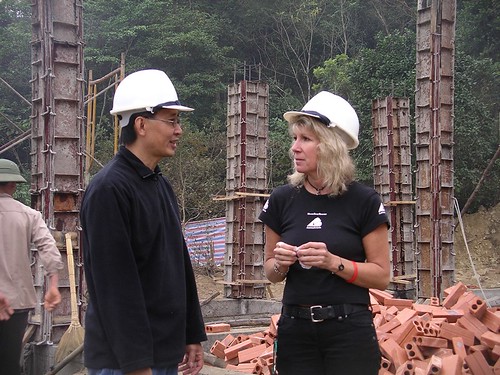

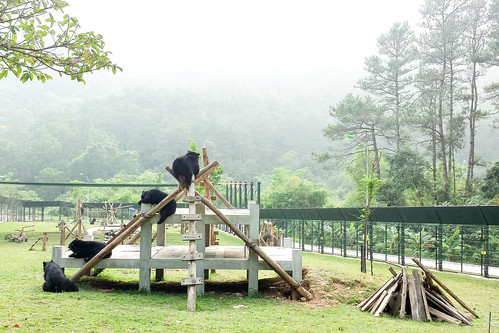
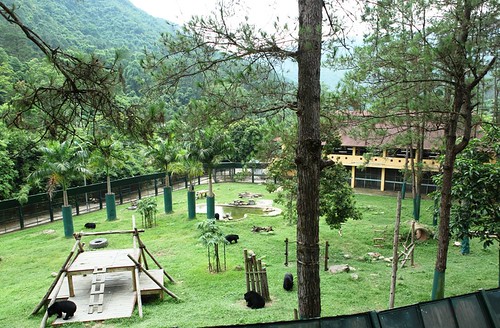






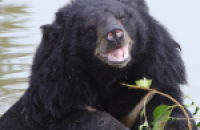 Healing the hidden wounds
Healing the hidden wounds
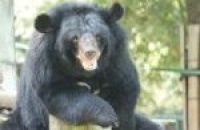 Early summer awakening at the China Bear Rescue Centre
Early summer awakening at the China Bear Rescue Centre
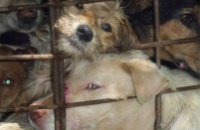 5 reasons the dog meat trade must end
5 reasons the dog meat trade must end